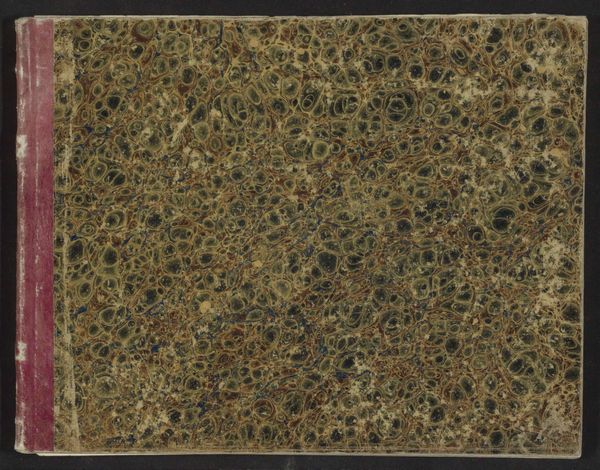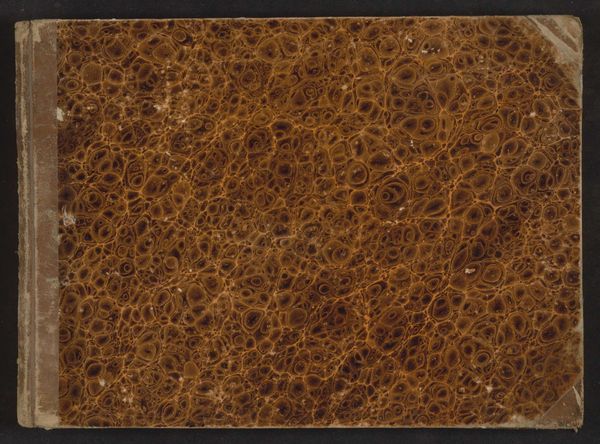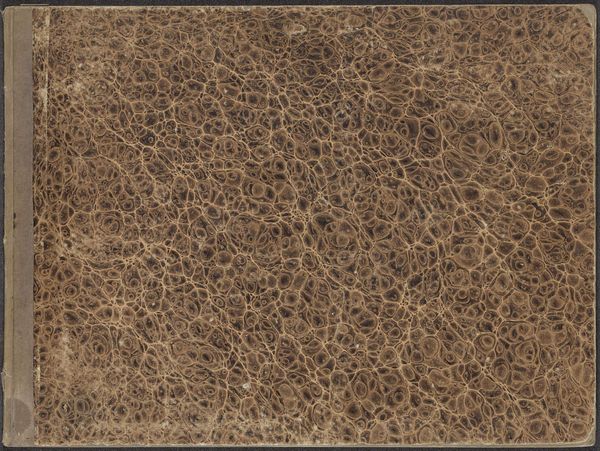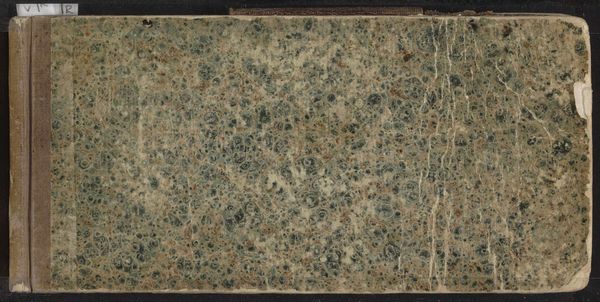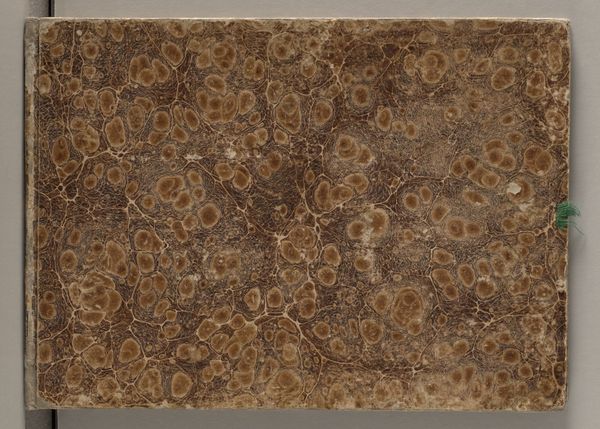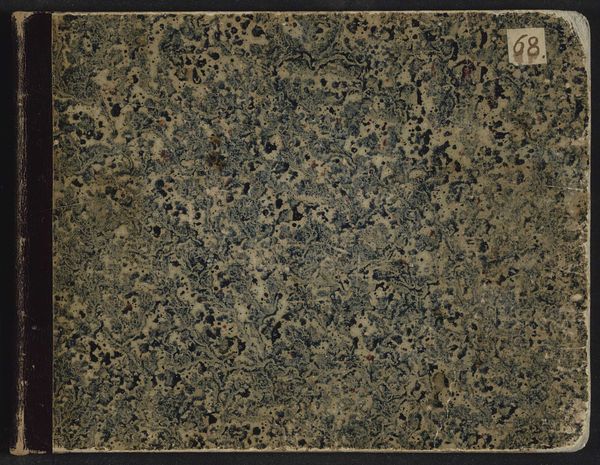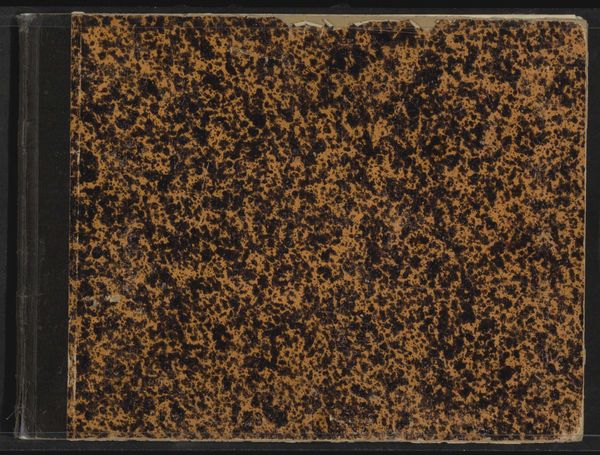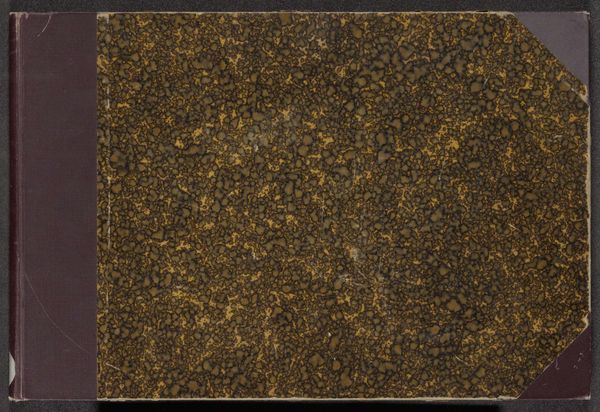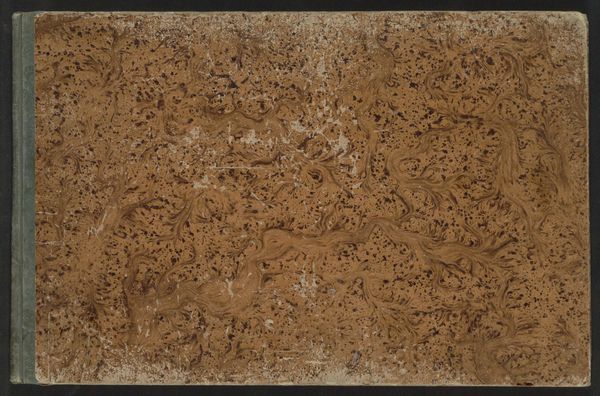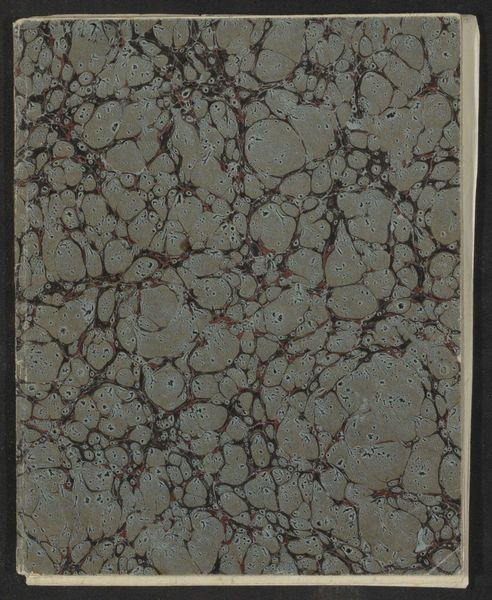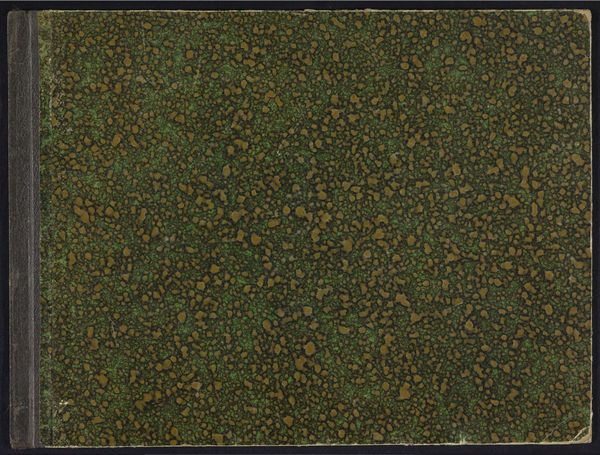
drawing, paper
#
drawing
#
organic
#
paper
#
organic pattern
#
geometric
Dimensions: height 218 mm, width 296 mm, thickness 13 mm, width 593 mm
Copyright: Rijks Museum: Open Domain
Curator: This is a sketchbook with 51 pages, attributed to Lambertus Lingeman, created sometime between 1839 and 1894. Editor: It has a really interesting surface – like some kind of magnified cellular structure rendered in sepia tones. Is it the actual drawings that are noteworthy? Curator: Well, at first glance, it’s the binding and the cover itself that stand out. The interplay between organic patterns and their geometric arrangement establishes a compelling visual language, not often highlighted, considering this is a preliminary book for sketches. Editor: I'm wondering about the materiality of that cover. What sort of process yielded this marbled, almost topographic texture? Was it some industrial marbling technique that mimics naturally occurring patterns? The labor of that kind of artificial craftsmanship feels worth exploring. Curator: Certainly, the production method bears investigation. However, I'm immediately drawn to the implications of its internal structural rhythm – how forms echo and converse across the entire picture plane, creating a captivating sense of unity. The balance is quite striking, and it has been achieved via geometry. Editor: True, but that surface likely wasn't generated through artistic intention in the way that Lingeman’s sketches are. Thinking about that difference allows us to understand where ‘art’ resides – with whom, and where? Maybe the binding wasn’t intended as such but now it exists inside this museum as something of artistic value. Curator: That tension you describe is very real here. There are a set of choices at play, that work with what you propose is an impersonal process of applying the design, like ink spot marbling, which create a piece more appealing than if those actions hadn’t taken place. Editor: Precisely! So, by engaging with the craft, the consumption, the labor behind this humble sketchbook, we get to ask some important questions. We are pushing the margins of ‘Art’. Curator: Yes, questions about how the interplay of intent, material, and design ultimately shape our perception of art objects. Editor: For sure. This changes my vision now. What began as simply decorative turns out to invite a critical lens of what’s aesthetic and artistic, what it’s ‘raw’.
Comments
No comments
Be the first to comment and join the conversation on the ultimate creative platform.
